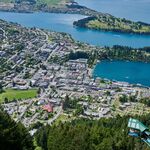Rainforest
Senior Member
The truth is, nobody knows for sure what will happen when the Line 5 opens in 2025/2026, and how fast ridership will grow as people get used to a (hopefully) reliable and fast crosstown transit option. As Reece Martin and many other people have predicted, the ridership estimates for Eglinton could be woefully low. As late as 2016, Metrolinx predicted only 162,000 daily riders by 2031, a third of Line 2's current daily weekday ridership. In 2017, Metrolinx predicted the GTHA would reach 10 million by 2041, but by the most conservative estimates it is already around 8.5 million, and likely closer to 9.5 million when factoring in disproportionate growth in the GTHA vs. non-metropolitan areas since 2021 and overstayed visas (Benjamin Tal from CIBC).
It looks like we are debating the quality of predictions about predictions. This line will be in active operation within several months, and then we will have the real-life counts.
Absolulely "worst" case scenario: demand beats all expectations, then the TTC has to continue running substantial bus service together with the LRT, and scramble to order more LRT cars. Still not the end of the world.




